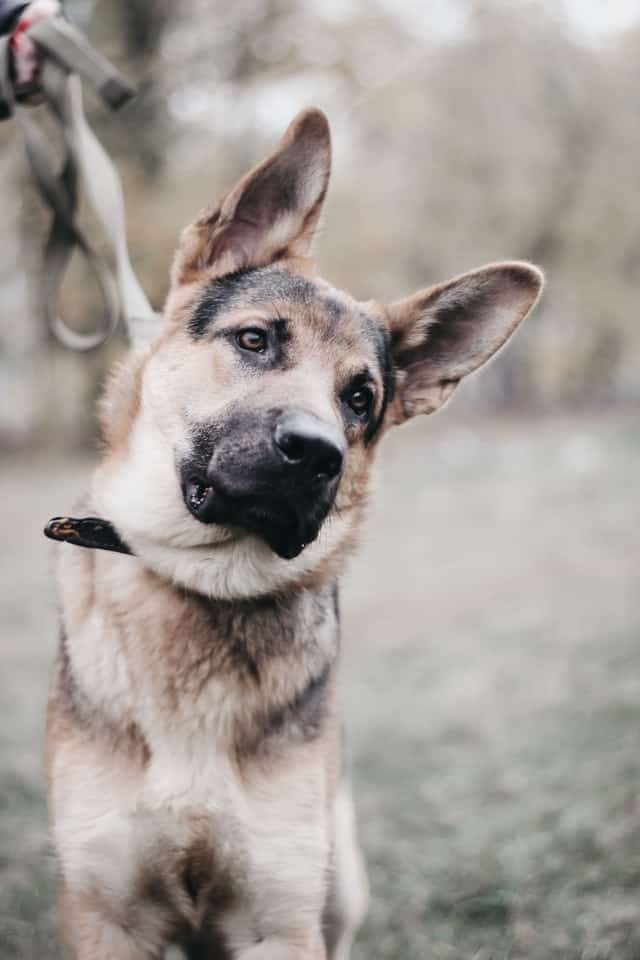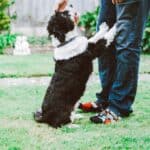
Re-educating an aggressive dog is possible if we identify the cause of this aggression and treat it by trying to understand the animal.
Aggression in dogs is a frequent problem, especially in those who, as puppies, have not enjoyed good socialization or have suffered some trauma. However, re-educating an aggressive dog is possible if we identify the root of the problem and contact the appropriate professional .
What is aggression in dogs?
Aggression is the tendency to behave or respond violently. This conduct occurs in any animal species when faced with a threatening situation, as a response to fear.
To a certain extent, a small amount of aggression is a perfectly natural trait in an animal, which helps it survive in the environment.
However, when aggression is part of the dog’s daily life and emerges in normal situations, the animal presents a problem of aggression.
Aggression is a type of disruptive behavior. In other words, it is the conduct that does not allow the normal development of the dog’s life or of the people who live with him. Other disruptive behaviors consist of bad social skills, fear, inappropriate games, or poor stress management .
An aggressive dog can go so far as to attack himself, other animals, strangers and even the very people he lives with.
Causes and types of aggression
Aggression can have different origins, depending on the individual. Identifying the cause is very important, as it represents the first step in rehabilitating an aggressive dog .
- Organic causes. Pain, nervous system or physiological problems.
- Fear.
- Hierarchy.
- Avoidance. helplessness or anger due to frustration arises when the animal tries to avoid a situation from which he can not escape.
- Territorial.
- Maternal. Because of the puppy defense.
- Resource defense.
- Redirected. The aggression ends up being directed at another individual who had no part in the conflict.
- Predatory . These are instinctive hunting reactions , particularly present in some dogs.
- Idiopathic. With no clear cause, aggression is not attributed to any precise precedent. These are dogs that shoot for almost anything. If the case is investigated, the cause can eventually be identified, but it is not a very common type of aggression.
- Induced by the game.
- Intraspecific. It is aimed at other dogs, whether cohabiting or not.
Stress sets a very strong precedent in canine aggression . A dog that has accumulated a great deal of stress due to the way it lives, lack of stimulation or environmental enrichment, or a dog that does not know how to handle these situations can become aggressive.
How to re-educate an aggressive dog?
As the word itself indicates, eliminating aggression means imparting an “education”. It is necessary to educate a dog, so that he can enjoy all the situations that the surrounding environment presents to him. Consequently, an aggressive dog needs a professional educator, not training.
Canine rehabilitation techniques can be dangerous if they are practiced by a person who does not have adequate knowledge of the subject. The best choice is to contact a professional who is able to find the technique that best suits the dog in question.
There are several techniques for re-educating an aggressive dog, which always require starting from observation and communication with the animal. The following are some of these techniques:
- Stress reduction therapy . It is the one that requires most of the work, but allows you to reduce the dog’s anxiety in different situations. For example, using slow food when it is mealtime, considerably increasing environmental enrichment, working on socializing with dogs and people, increasing the time devoted to walks, during which the dog can move and smell what he wants, etc.
- Addiction and desensitization . Prolonged but gradual exposure to the same stimulus ends up accustoming the animal to this stimulus.
- Conditioning . It can be used to condition the dog in a positive way by increasing or decreasing the behavior we desire.
Finally, through extinction we eliminate a behavior by removing the reinforcement to a response . For example, when we play and the dog starts biting , we stop playing.
We can look for an alternative answer, such as, instead of letting it bite ourselves, redirect the dog to a tooth ring. Furthermore, we can choose impulse or bite control, anxiety about food or play.






